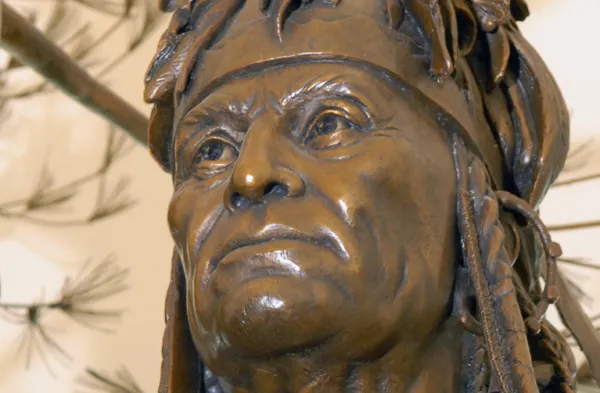
ADVERTISEMENT - CONTINUE READING BELOW
18. The elected Pine Tree Chiefs could sit on the Great Council
The Iroquois allowed for the election of so-called Pine Tree Chiefs to be elected to sit at the Great Council. These were men who had distinguished themselves through their leadership, warrior skills, oratory, or abilities at diplomacy. Their positions were not hereditary, nor could they designate their own successor. If they opposed consensus during deliberations they were allowed to remain, but their arguments were no longer allowed to be presented to the council. One Pine Tree Chief, known as Skenandoa, or Shenandoah, violated Iroquois policy during the Revolutionary War. Working with a matriarch Skenandoah delivered over 250 (although several sources claim different amounts) bushels of maize to the American encampment at Valley Forge during the spring of 1778. There, he met with George Washington before returning to the Oneida lands in New York. The other five nations of the Iroquois were then allied with the British.
Some Tuscarora warriors joined with Skenandoah and his Oneida band in action against the British during the Revolutionary War. The Tuscarora had joined the original five tribes of the confederation in 1722, having migrated to the New York region from Virginia and North Carolina. Although accepted into the confederation, they were granted no seats at the Great Council. They had no sachem to speak for them, and could not send Pine Tree Chiefs to the council. Instead, the Tuscarora had to petition the Cayuga to present their grievances or issues of concern to the sachems, and accept the decisions of the council without protest. Thus the Tuscarora had no means to participate in the government of the Confederation of which they were a member, as either individuals or through tribal representation.

